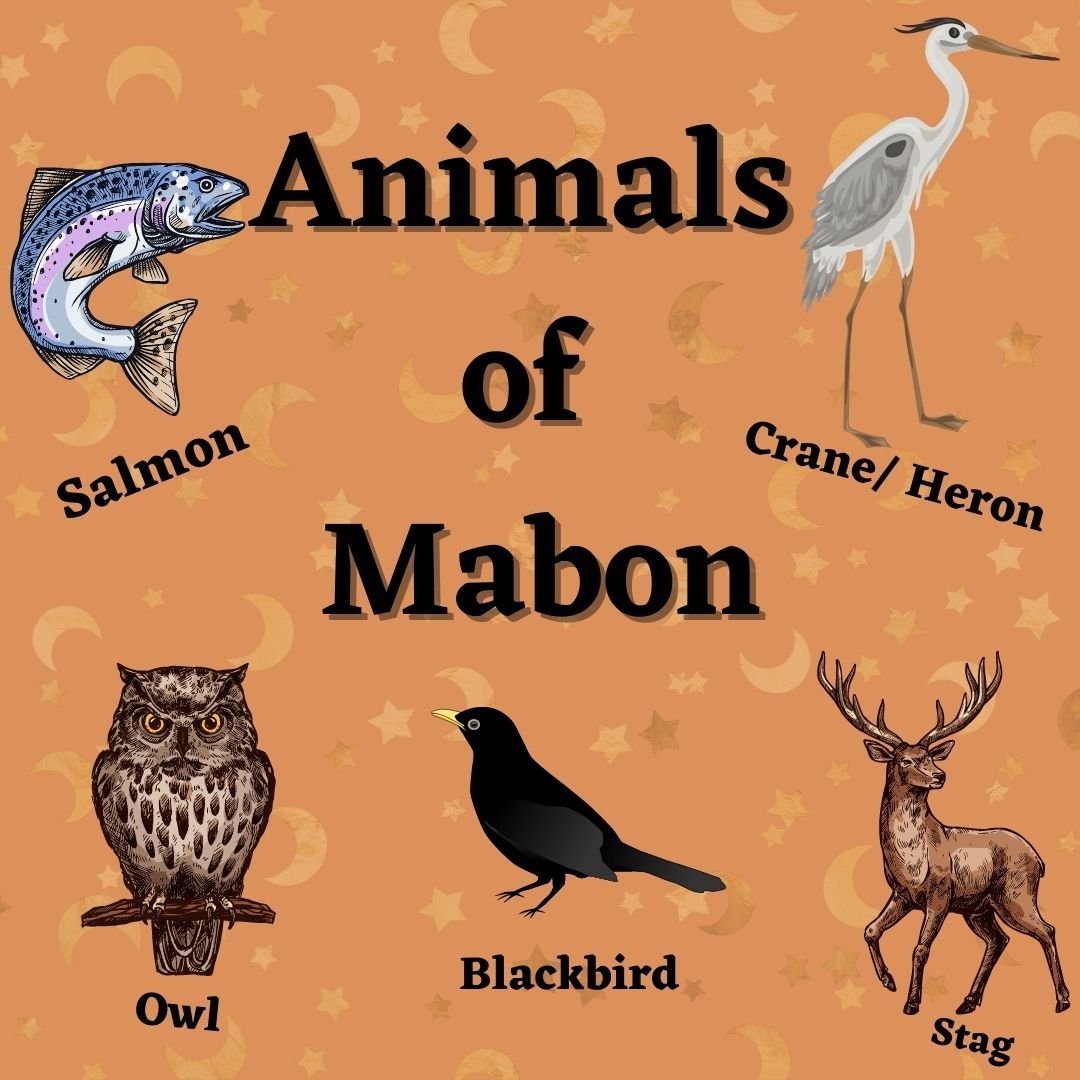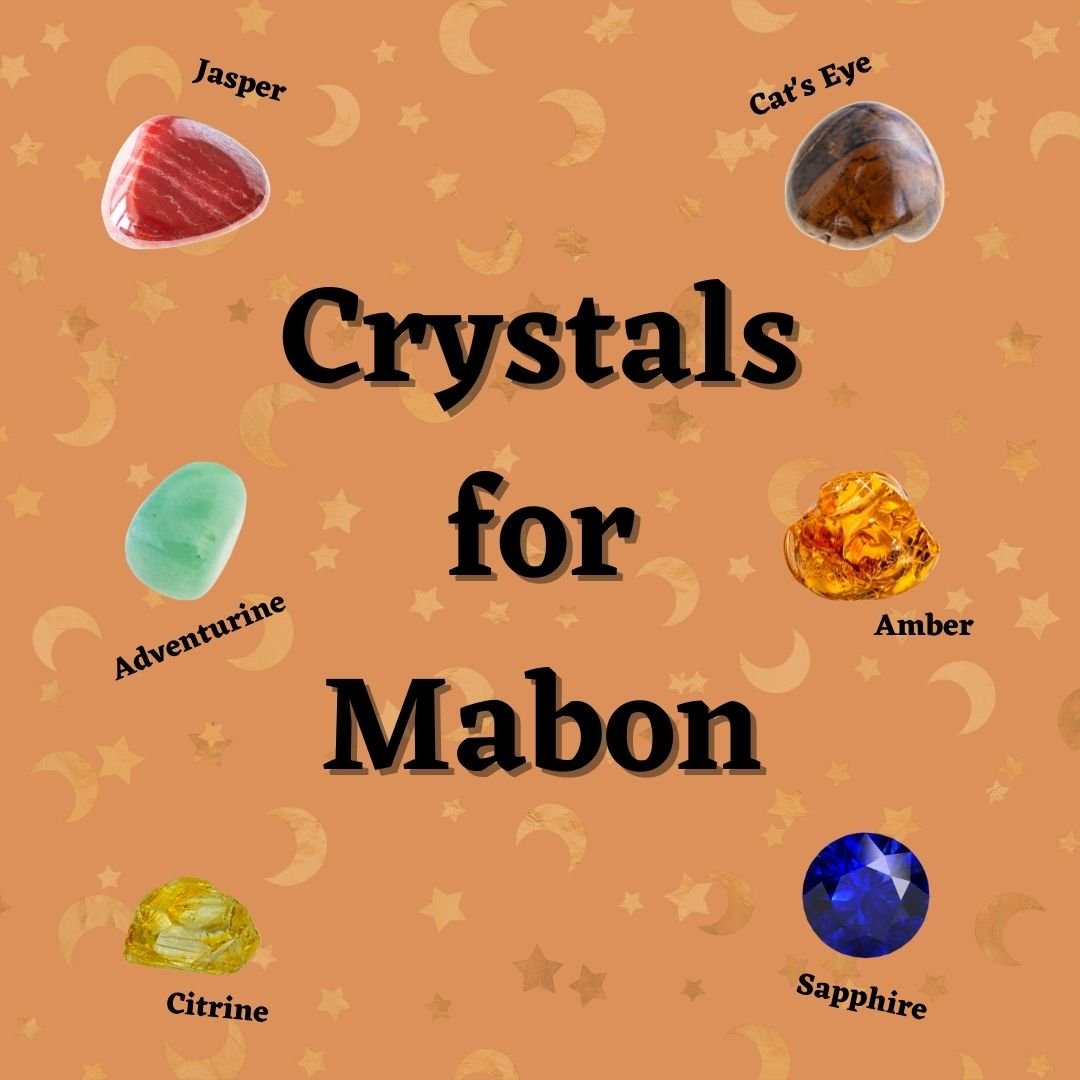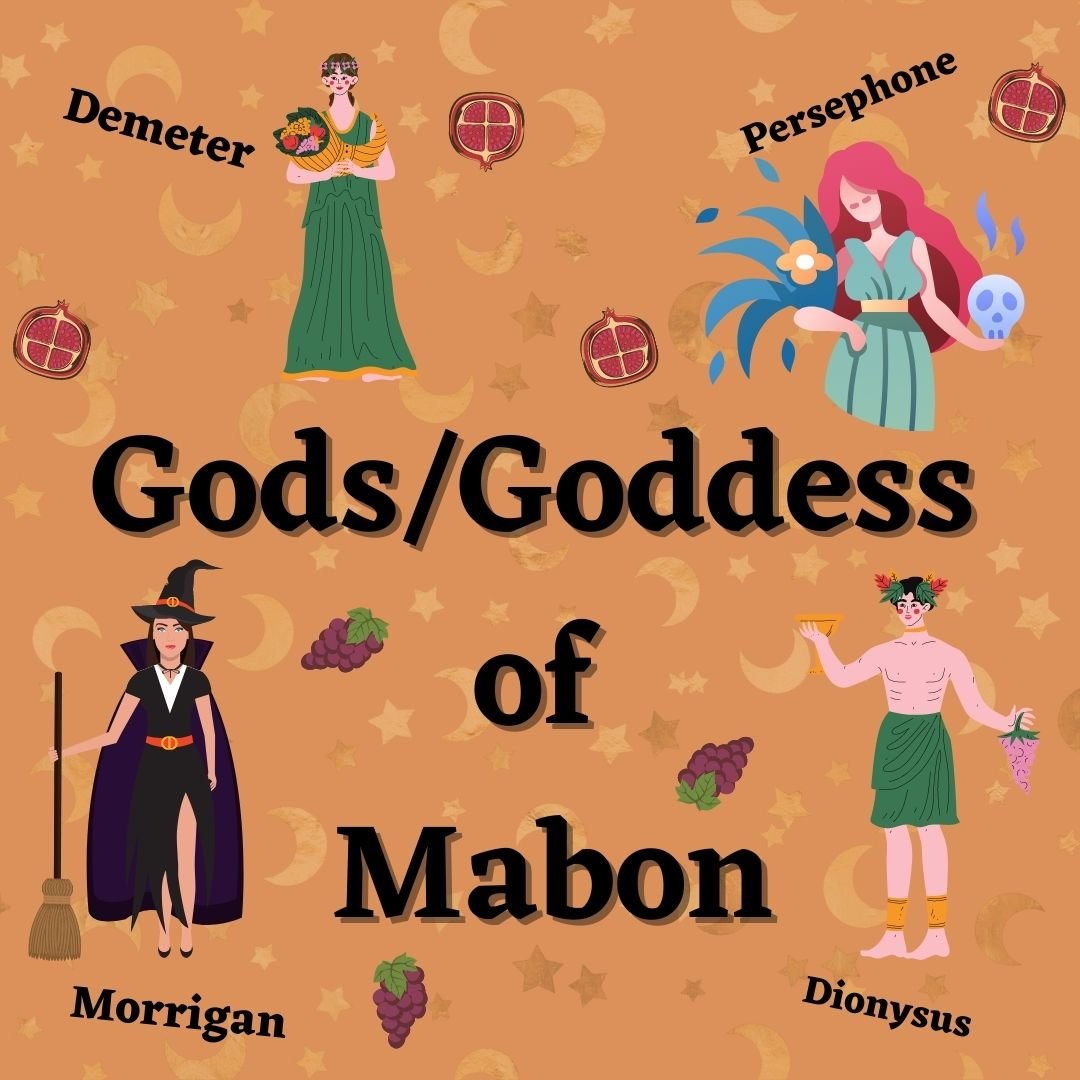Everything You Need to Know About Mabon
Mabon is also known as the Autumn Equinox, the second time of the year when the hours of light and dark are equal (the other is the Spring Equinox, Ostara). This is also the second of three harvest festivals on the pagan Wheel of the Year, the first is Lammas; the third is Samhain.
Mabon is a time of celebration at the end of the harvest. It’s a time of rest after the hard work of gathering the crops for winter.
The original American Thanksgiving was celebrated on October 3, which makes a lot more sense than the current date at the end of November.
Not much will be left to harvest in the end of November, if the snow hasn’t already started.
Side note: The American Thanksgiving became a holiday on October 3, 1863, when Lincoln announced the national day of Thanksgiving was to be celebrated on Thursday November 26. Different US Presidents have moved it around from the third and fourth Thursday in November. It’s not linked to the harvest, but to the idea of unity and giving thanks.
The writer and editor Sarah Josepha Hale campaigned to have a Thanksgiving day to promote unity during the Civil War. The idea of unity had come from the 1621 gathering and harvest feast shared by the Pilgrims of Plymouth, English Colonists and the Wampanoag people.
In the 1970’s, Modern Pagans began celebrating what is now known as Mabon.
Wheel of the Year
Welcome to our journey through the Wheel of the Year, a beautiful and cyclical guide to the seasonal festivals celebrated by many Wiccans, Pagans, and various nature-based spiritual paths. This wheel symbolizes the annual cycle of seasonal festivals, marking the natural rhythms of the Earth and the ebb and flow of life.
The Wheel of the Year consists of eight Sabbats, each celebrating a different aspect of the Earth’s journey around the sun. These festivals include four solar events — the solstices and equinoxes — and four seasonal festivals traditionally tied to agricultural cycles.
1. Samhain (October 31st-November 1st): Marking the end of the harvest and the beginning of winter, Samhain is a time of reflection, honoring ancestors, and the thinning veil between worlds.
2. Yule (Winter Solstice, around December 21st): Celebrating the rebirth of the sun, Yule is a festival of light, joy, and the promise of the returning warmth.
3. Imbolc (February 1st): A festival of purification and the first stirrings of spring, Imbolc is a time for setting intentions for the upcoming year.
4. Ostara (Spring Equinox, around March 20th): Marking the balance of day and night, Ostara celebrates new beginnings, fertility, and the vibrant awakening of the earth.
5. Beltane (May 1st): A joyful festival celebrating fertility, fire, and abundance, Beltane is a time of passion and growth.
6. Litha (Summer Solstice, around June 21st): The peak of summer, Litha is a celebration of light, power, and the fullness of life.
7. Lammas or Lughnasadh (August 1st): The first harvest festival, Lammas is a time to give thanks for abundance and to reap what has been sown.
8. Mabon (Autumn Equinox, around September 22nd): A time of balance and reflection, Mabon celebrates the second harvest and the winding down of the year.
Each Sabbat reflects a unique aspect of the Earth’s natural cycle and offers a moment to pause, reflect, and celebrate the ever-changing beauty of nature. As we journey through the Wheel of the Year, we connect with these natural rhythms and honor the legacy of our ancestors who lived by these seasonal cycles.
Mabon in Wicca + Witchcraft
Mabon is the completion of the harvest that began on Lammas or Lughnasadh. Day and night are equal and when the sun sets, the dark will take over the light.
At this time, the God begins his journey into the unseen, leaving his physical body behind. This is the beginning of the rebirth of the Goddess.
As the sun begins to weaken, the Goddess feels the sparks of fire starting in her womb. The sparks are the inklings of the God, who will be reborn in the Spring.
The months of March and September are known for the most spectral appearances and hauntings as well as heightened psychic stress ( An ABC on Witchcraft).
The sun is moving into the zodiac sign of Libra, which brings balance. This balance is also when the veils between the seen and unseen are thinnest. Which explains why hauntings and spectral sightings are heightened during the equinoxes.
Mythology of Mabon
The themes of life, death and rebirth are popular at this time of year. The lushness of summer is dying and the earth is preparing for a hard, cold winter.
Greek Mythology: Demeter and Persephone
This is a pretty popular harvest myth. Demeter is the Greek Goddess of grain and harvest and her daughter Persephone had caught the eye of Hades, the God of the Underworld. He abducted her from the surface and brought her to the Underworld. Demeter’s grief over this caused the crops of Earth to wither and go dormant. While in the Underworld, Persephone had eaten six pomegranate seeds, which caused her to have to spend 6 months a year in the Underworld. These are the 6 months of the year when the Earth dies, which begins at the Autumnal Equinox.
This mythology is represented in the Book of Shadows Tarot As Above deck (Amazon link). You see Demeter sitting on the land, holding a cornucopia, with her arm outreached to Persephone, who is beginning her journey to the Underworld. I notice that they each have their pointer finger outstretched to each other, symbolizing to me the idea of As Above, So Below. So Below, As Above.
In this deck, Mabon is the name given to the card of Justice, which sits between the Wheel of the Year and The Circle (Hanged Man) cards. Change is upon us, but we will need to make decisions now that will affect the shape of our future. The upcoming time will be a time to focus on the more spiritual aspects of life.
Sumerian Mythology: Inanna
Inanna is the Sumerian Goddess of fertility and abundance. When she descended into the underworld, where her sister, Ereshkigal, ruled, it was decreed that Inanna could only enter the underworld like everyone else- by stripping yourself of clothing and earthly possessions. By the time that Inanna had done this, Ereshkigal had released a series of plagues upon her sister, killing her. During the time that Inanna was in the underworld, the Earth had ceased to grow. A vizier restored Inanna to life. As she rose back up to the surface, the Earth began to flourish and produce again.
Celtic Mythology: Modron
Mabon is the Celtic God of the Sun and the son of Modron, the Great Goddess of the Earth. Mabon was born at the beginning of time and was kidnapped 3 days after his birth. The birth of Mabon, sometimes called Mabon ap Modron (Son of the Mother), represents the transition of the Goddess from Maiden to Mother.
He was imprisoned in what is now known as Caer Loyw, which is guarded by the Nine Witches from Arthurian Legends.
A man named Culhwch (KESH-lookh) was cursed so that he could take no bride other than Olwen, the daughter of Ysbaddaden (iss-pa-THAW-then), the Giant Chieftain.
Culhwch was challenged to 39 tasks, the last being the freeing of Mabon, who was needed to complete the final task. With the help of Culhwch's cousin Arthur, they were able to free Mabon, who's song of suffering was heard by the Salmon of Lyn Llyw during his yearly migration.
Other Names for the Mabon Festival
Christian Europe celebrate the autumn equinox as the Feast of the Archangel Michael during Medieval times. This is still celebrated today in some English counties.
Modern Druids celebrate this time as the balance between light and dark or Alban Elfed.
Mabon falls on the moon’s birthday in China. It’s celebrated by baking cakes of harvested rice to honor the moon.
The Yoruba people of Nigeria celebrate the yam festival every October with dances for their ancestors and fertility of crops.
The Iroquis people gather for the Corn Dance each fall to give thanks for the ripening of grains.
How to Decorate a Mabon Altar
As Mabon is the second of the harvest festivals, the colors are typically the colors of autumn. Oranges, red, golds, yellows and browns are seasonally appropriate.
Pomegranates are used to symbolize the fruit that was given to Persephone. Also, pomegranates symbolize fertility and abundance.
Symbols to place on your Mabon altar can be anything seasonal. Mid- autumn vegetables including pumpkins, squash, eggplant, and gourds. Apples, grapes and pomegranates are also used. Anything that symbolizes a harvest including baskets, harvest tools (a small rake or shovel) can also be included.
You can find more of Mabon Correspondences in this post.
Symbols: Cornucopia (horn of plenty), pinecones, seeds
Colors: Orange, red, yellow, brown, copper, dark yellow, dark green
Foods: Corn, beans, squash, apples, pumpkins, cider, root vegetables, pomegranate, wine
Herbs: Yarrow, rosemary, sage, mugwort, rosehips,
Stones: Amber, citrine, cat’s eye, aventurine, sapphire, jasper
Flowers: Sunflowers, thistle, marigolds
Deities: Mabon, Green Man, Demeter, Persephone, Morgan, Pomona, Inanna
Animals: Owl, stag, blackbird, salmon
Rituals for Mabon
Rituals for Mabon typically include giving thanks and gratitude around a feast. The main staples of the feast is typically corn, from the most recent harvest.
Corn bread is a common food and wine is a common beverage.
Dionysus (Bacchus) is also a God that can be mentioned here. He is the God of "grape-harvest, winemaking and wine, of fertility, orchards and fruit, vegetation, insanity, ritual madness, religious ecstasy, festivity and theatre" (Wikipedia).
If you are looking for more rituals that you can complete by yourself or with a coven then I recommend the following books:















Looking to add a little magic to your love life? ✨ This beginner-friendly guide shares 10 enchanting love spells, perfect for attracting romance, enhancing relationships, or nurturing self-love. With simple ingredients and easy-to-follow instructions, you'll learn how to create charm jars, perform candle rituals, and even brew a love-infused tea. Whether you're new to witchcraft or just want to explore the art of love magic, this post has everything you need to get started. Remember, the best spells begin with positive intentions and a heart full of love.